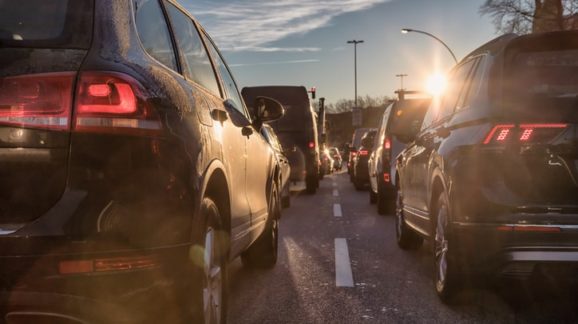Fuel Economy Chaos – What Is it, Who Caused it, What’s the Cure

 I highly recommend Mike Colias, Ben Foldy, and Andrew Restuccia’s Wall Street Journal article about automakers’ divergent positions on the Trump administration’s Safer Affordable Fuel-Efficient (SAFE) Motor Vehicle rule.
I highly recommend Mike Colias, Ben Foldy, and Andrew Restuccia’s Wall Street Journal article about automakers’ divergent positions on the Trump administration’s Safer Affordable Fuel-Efficient (SAFE) Motor Vehicle rule.
The subtitle of the piece reads: “The auto industry asked for easier environmental rules. It got chaos.” I would describe the situation differently.
Automakers wanted easier rules and got more than they had the courage to ask for: repeal of California’s unlawful power to threaten their bottom lines. California acquired that power in July 2009, when the Obama administration deputized Sacramento bureaucrats to adopt and enforce greenhouse gas (GHG) emission standards for motor vehicles.
Motor vehicle GHG standards unavoidably regulate fuel economy. Carbon dioxide (CO2) comprises about 95 percent of motor vehicle GHG emissions. However, there are no commercial technologies to capture or filter tailpipe CO2 emissions. Consequently, the only practical way to reduce CO2 emissions per mile is to reduce fuel consumption per mile—in other words, increase fuel economy.
The Energy Policy and Conservation Act (EPCA), as enacted in 1975 and amended in 2007, expressly prohibits states from adopting or enforcing laws or regulations “related to” fuel economy. The Obama administration’s July 2009 waiver authorizing California’s regulation of motor vehicle GHG emissions and the associated “historic agreement” with the California Air Resources Board (CARB) ushered in an era of legal chaos. For 10 years, CARB has wielded powers over a major industry specifically preempted by federal law. This was an inherently unstable status quo ripe for rescinding by a president seeking to protect American manufacturers from bureaucratic overreach.
The specter of market chaos has haunted automakers since the mid-2000s, when CARB first asked the Environmental Protection Agency (EPA) for permission to establish GHG emission standards for new cars sold in California. As explained by the National Automobile Dealers Association in its January 2009 report, Patchwork Proven, if approved by the EPA, the CARB program would set the stage for a “patchwork” of state-by-state fuel economy requirements. To summarize:
- Under Section 177 of the Clean Air Act, once the EPA authorizes California to implement a motor vehicle emission standard, other states may opt into the California program. Unlike other motor vehicle emission standards, but exactly like the fuel economy standards they mimic, greenhouse gas emission standards apply not to individual vehicles but to entire fleets or fleet segments on average.
- Each automaker typically sells a different mix of vehicles in each state because consumer preferences differ from one state to the next. To achieve the same average GHG/fuel economy in two different states, each automaker would have to reshuffle the mix of vehicles delivered for sale in those states.
- If all states were to join the California program, each automaker would have to adjust its production and sales to achieve the same fleet average CO2/mileage standards in 50 separate markets—exactly the sort of chaos Congress enacted the EPCA preemption to prevent.
In a classic Machiavellian move resembling a protection racket, the Obama administration offered to rescue automakers from the patchwork chaos they feared would ensue from EPA’s expected approval of California’s GHG standards, albeit for a price. In the aforementioned “historic agreement,” negotiated under a “put nothing in writing, ever” vow of silence by Obama climate czar Carol Browner, California and its allied states agreed to deem compliance with the EPA’s forthcoming motor vehicle GHG standards as compliance with their own. In return, automakers vowed never to challenge the legality of California’s standards.
However, the deal only suspended rather than abolished the prospect of market chaos. The agreement was never more than an uneasy truce wired to fall apart whenever California does not get its way. The so-called One National Program exists only as long as the EPA, the National Highway Traffic Safety Administration, and automakers all dance to California’s tune.
The parties to the “historic agreement” kept mum about California’s effective veto over federal policy makers. However, thanks to President Trump, who has a way of provoking progressives to show their true colors, California let the cat out of the bag just weeks after the EPA and NHTSA proposed the SAFE rule. On September 28, 2018, the California Air Resources Board declared that automakers will no longer be “deemed to comply” with CARB’s standards unless they “meet the [Obama-era] standards originally agreed to by California.”
The durable cure for fuel economy chaos is Part One of the SAFE rule, which enforces the EPCA preemption by revoking the EPA’s most recent (2013) waiver authorizing California to regulate GHG emissions from passenger cars and light trucks.
The automakers asked for more lenient rules and “got chaos” only in the sense that their regulatory obligations will remain unsettled until the courts settle California’s lawsuit against the U.S. government. Battle, whether military, political, or legal, is often chaotic. However, beating the forces of chaos seldom happens without a fight.